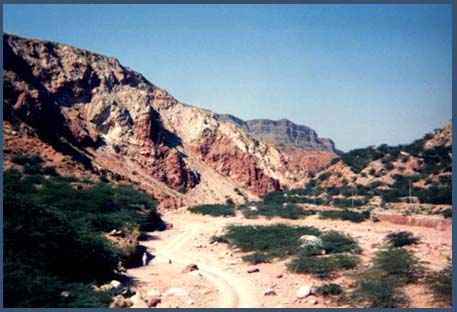
Research excerpts from: "Paleobotanical Anomalies Bearing on the Age of the Salt Range
Formation in Pakistan: A Historical Survey of an Unresolved Scientific Controversy” Paper by
Michael
A. Cremo presented at the XXI International Congress for History of Science - July 2001, Mexico City (unless otherwise noted)
|
The Salt Range
Mountains of Pakistan have attracted the attention of geologists for over a century. Starting in the foothills of the Himalayas in northeastern Pakistan, they
extend about 150 miles in a westerly direction, roughly parallel to the Jhelum River until it joins the Indus. They then extend some distance beyond the
Indus. The southern edge of the Eastern Salt Range Mountains drops steeply two
to three thousand feet to the Jhelum River plain. In this escarpment and other
locations the Salt Range Mountains expose a series of formations ranging from
the earliest Cambrian to the most recent geological periods. Such exposures are
rarely encountered and are thus of great interest to geologists and earth
scientists.
At the bottom of the series, beneath the Cambrian Purple
Sandstone, lies the Salt
Range Formation, composed of thick layers of reddish clayey
material (the Salt Marl), in which are found layers of rock salt, gypsum, shale, and
dolomite. For centuries the salt has been mined and traded in the Northern Indian
subcontinent. Ever since geologists have been studying this formation in the middle
part of the 19th century, the age of the Salt Range Formation has been a topic of
extreme controversy. The controversy intensified in the 20th century when scientists
discovered remains of advanced plants in the Salt Range Formation.
|

